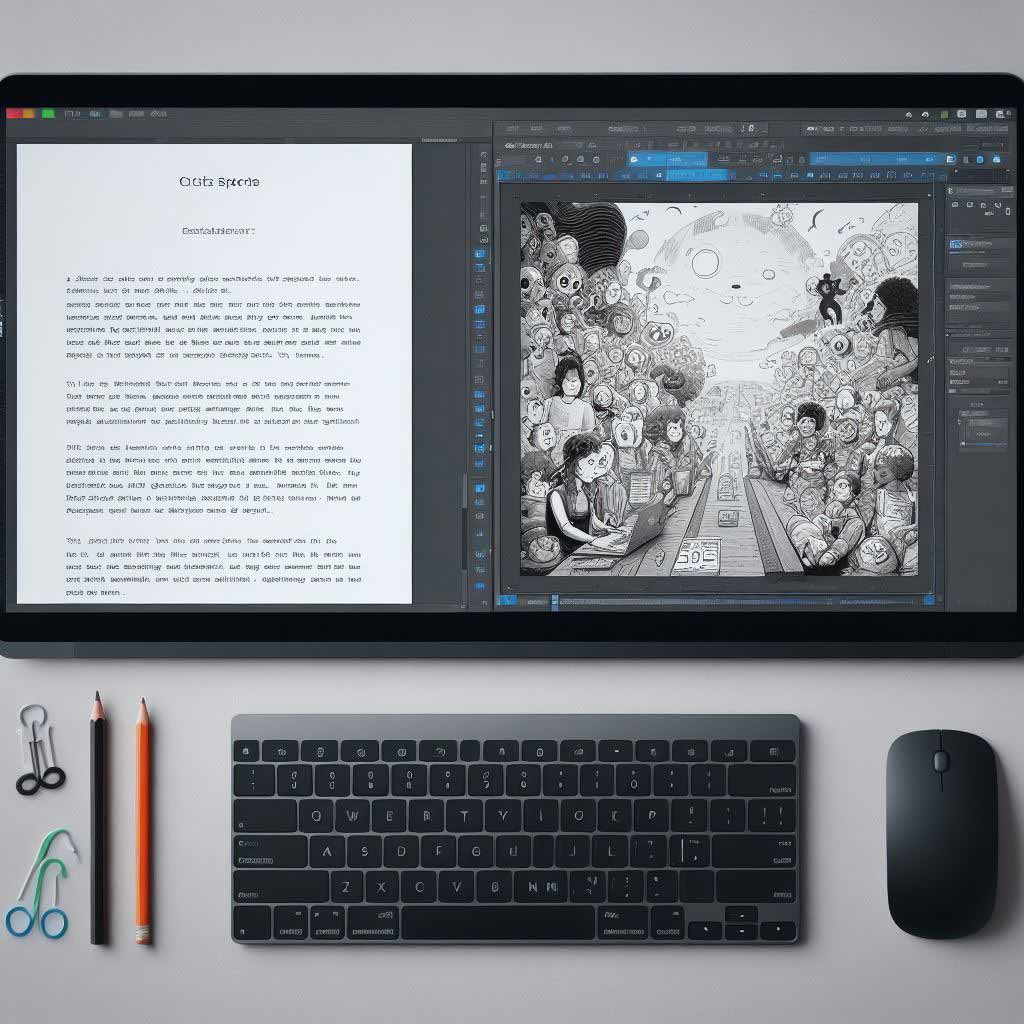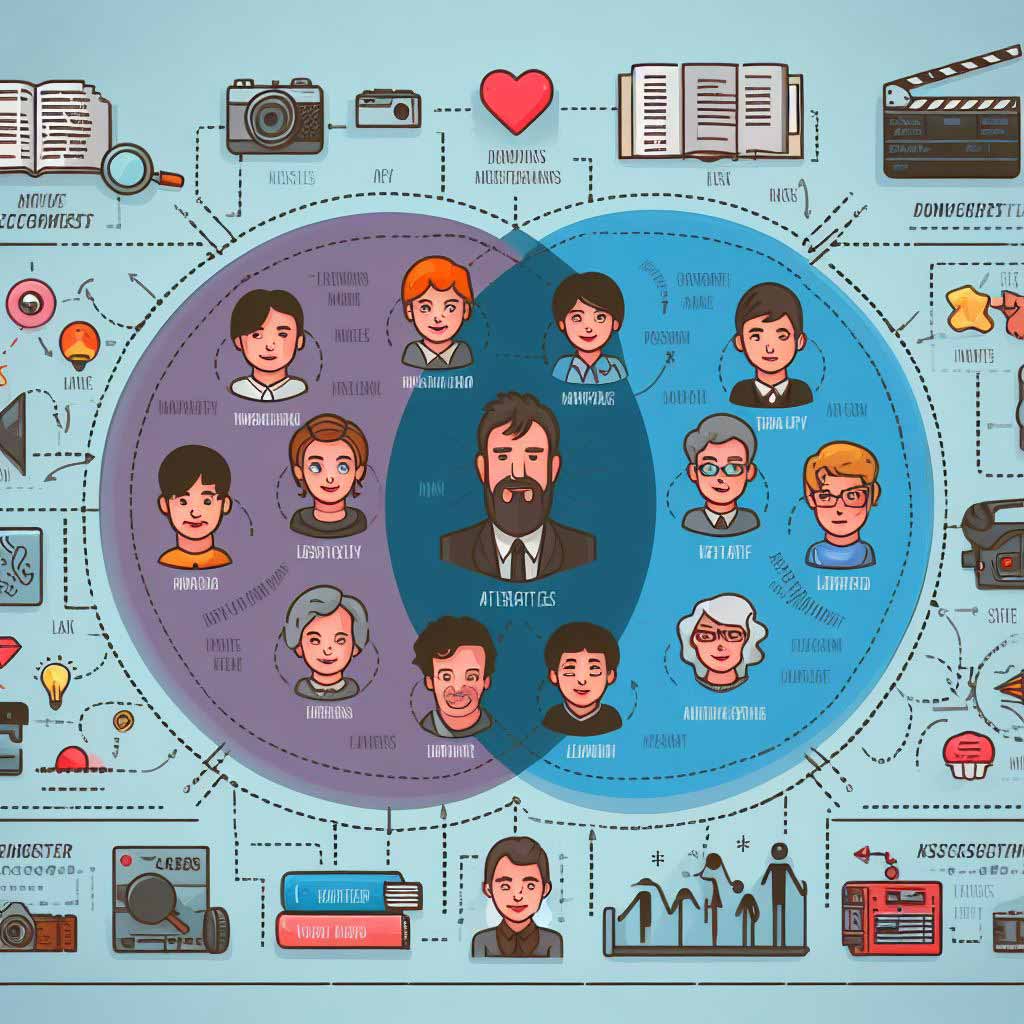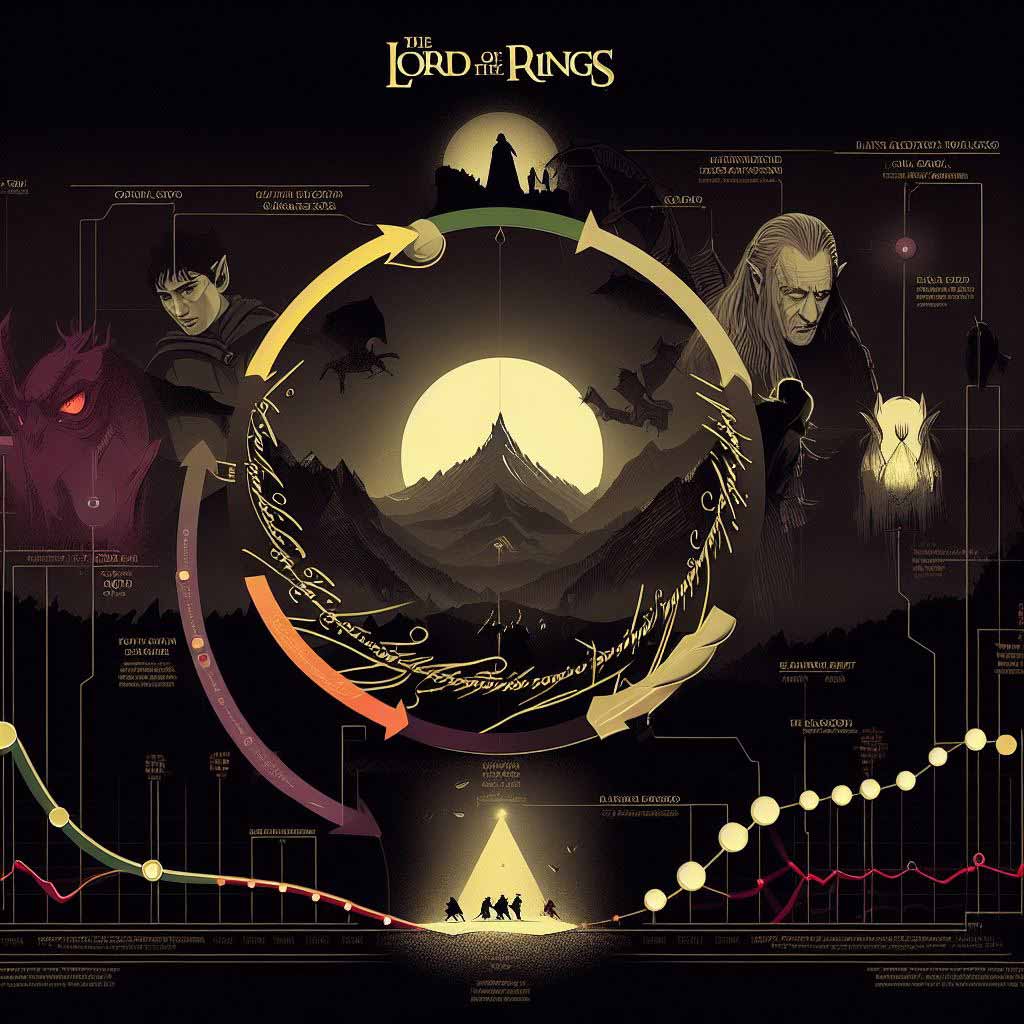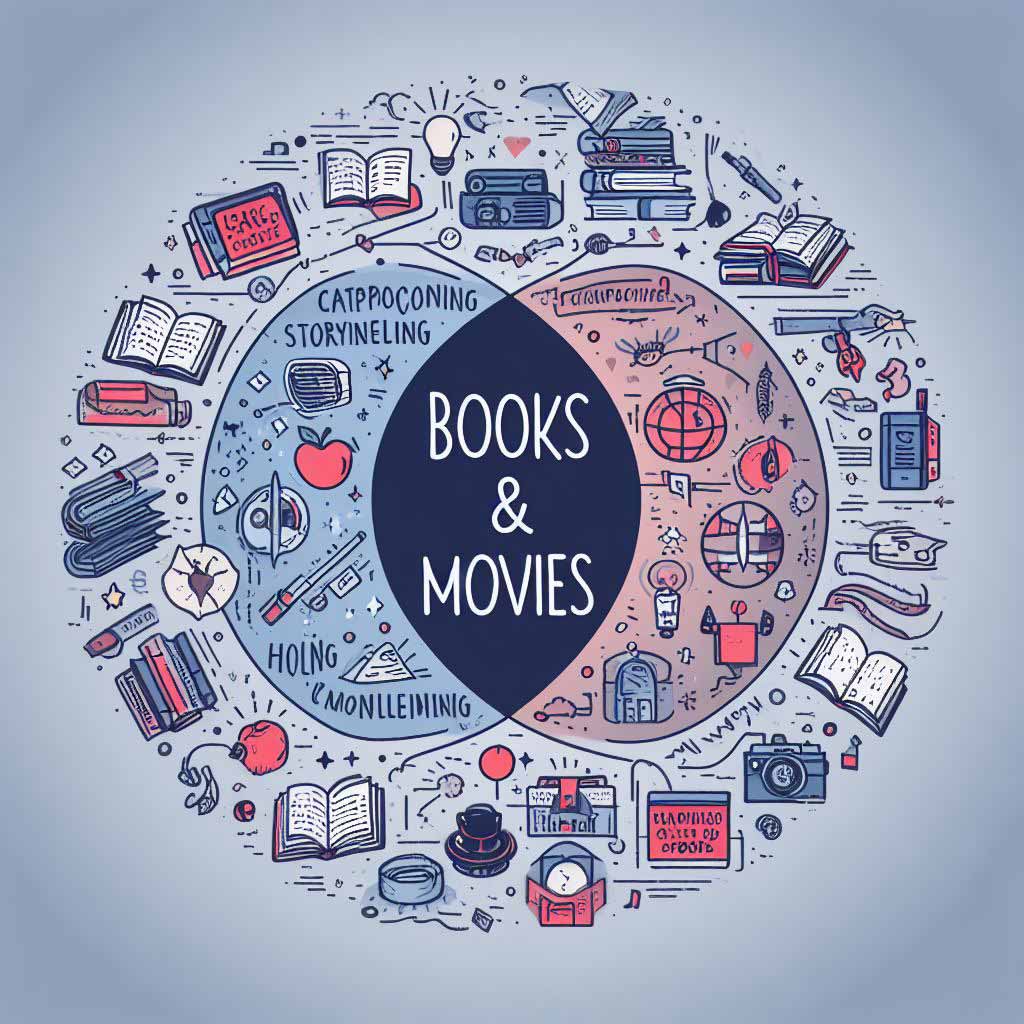The opening line sends a chill down your spine. You envision the scene unfolding before your eyes. The narrator’s voice draws you in instantly. You turn the page, eager to continue the journey.
Alternatively, the opening scene grabs your attention immediately. You watch the story come to life right before you. The visuals entrance you as the narrative unfolds onscreen. You can’t wait to see what happens next.
Whether hooked by the first sentence of a novel or the initial images on screen, compelling storytelling has the power to fully immerse audiences. But while novels rely solely on the written word and screenplays add critical visual components, they both utilize masterful narrative techniques at their core.
Understanding the key differences – and similarities – between scriptwriting and novel writing offers insights for any avid reader or movie buff. Even for aspiring writers hoping to captivate readers and viewers.
While seemingly distinct creative formats on the surface, screenplays and books share an intrinsic ability to transport audiences into riveting new worlds.

Key Differences Between Screenwriting and Novel Writing Formats
At first glance, anyone can distinguish a novel from a film or television script. Open the first page of a book and you’ll see paragraphs of text with quotation marks denoting dialogue scattered throughout.
Take a peek at scripted content and you’ll find screen headings, scene descriptions, character names, and dialogue formatted to appropriately translate from page to screen.
Upon closer examination, screenwriting and novel writing require fundamentally different skills to execute properly in their distinct formats:
Script Format Relies Heavily on Visual Components
Screenwriters don’t have the luxury of detailed narrative descriptions. Instead, scripts use succinct scene headings, sparse action lines, and focused dialogue to tell stories visually:
INT. COFFEE SHOP – DAY
Sara, 20s, apron tied around her waitress uniform, rushes between crowded tables. Some rowdy CUSTOMERS wave to get her attention.
CUSTOMER Excuse me, can I get another coffee?
Sara tries not to spill the plate of food she’s delivering as she passes.
SARA is Coming right up!
Scripts must create vivid mental images efficiently. Descriptions should jump off the page but not overwhelm the reader. The story needs room to come alive visually on screen through performances, cinematography, editing, and more filmmaking elements.
Novels Have More Flexibility for Detailed Descriptions
Novels rely solely on written words to immerse readers, utilizing vivid imagery and evocative language:
Sara felt as if she were juggling a dozen demands at once. The afternoon lunch rush flooded the cozy coffee shop with customers. Sara squeezed past the cramped tables, ignoring the glare from her manager Molly as another table waved her down. She delivered the plate of avocado toast and fruit salad, relieved to not spill it.
“Excuse me,” an impatient businessman said curtly, not looking up from his laptop. “Can I get more coffee when you get a chance?”
“Of course, I’ll be right back with that,” Sara replied politely, grabbing his empty mug. She couldn’t roll her eyes like she wanted.
Novelists leverage the flexibility of paragraphs to build detailed world-building. Pages come alive through descriptive language, offering glimpses into characters’ thoughts while conveying settings and emotions.
Software and Page Counts Vastly Differ
Screenwriters utilize specialized software like Final Draft to properly format scripts, essential for accurately timing episodes or films. The industry standard spec script fits between 100-120 pages, translating directly into minutes onscreen. Films generally equate to one page per minute.

Novelists often write books exceeding hundreds of pages using common word processing programs. Publishers may expect certain genres like thrillers or romances to hit around 80,000-100,000 words. Page counts prove far more flexible for novels than the rigid runtime requirements of spec scripts.
Structural Differences Between Novels and Screenplays
Writers outline both scripts and novels to map high-level story structure before drafting finer plot points and dialogue. But fundamental differences exist between script and book narratives and how events unfold on the journey from beginning to end.
Three-Act Structure Reigns in Film
Hollywood traditionally follows a template three-act structure:
- Act 1 – Set up the story, introduce the hero and world
- Act 2 – Build action to the midpoint crisis moment where stakes escalate
- Act 3 – Final push from the climax into a resolution and denouement
Scripts conform to expectations of brief exposition, escalating conflict, and clear resolutions all fitting within 90-120 minutes. Certain pivotal story beats happen at specific percentage milestones to keep pacing tight.
This streamlined structure breaks the complex task of scriptwriting into manageable chunks. Scenes serve specific purposes to constantly push the story forward.
Novels Have More Flexibility in Structure
Novels possess much more leeway to stray from traditionally structured narratives. While many still utilize a version of the three-act model, chapter breaks offer natural places to shift between time periods or points of view.
Some novels even play with narrative formats, like epistolary novels told through diary entries and letters. Poetic forms feature vignettes evoking a mood rather than progressing a plot. Short stories encapsulate a single scene or moment rather than spanning years.
Without defined runtimes, novels can explore techniques like flashbacks, foreshadowing through prophecies, and prolonged descriptions allowing audiences to linger in a particular moment.
Screen vs Page Constraints
Each storytelling medium comes with distinct spatial constraints influencing narrative:
Screen Constraints
Screenwriters face tough choices trying to fit stories into short feature-length scripts between 100-120 pages. Films longer than two hours test even ardent moviegoers’ patience. Broadcast half-hour show slots range from 20-22 pages. Hour-long dramas hit around 40-45 pages.
Writers carefully choose vital scenes to keep stories moving forward relentlessly towards resolutions without dragging pacing. Actors’ performances, camerawork, and editing seamlessly stitch scenes together for audiences on screen.
Page Constraints
Novels only face physical book spatial constraints— you can only print so many words depending on margins, fonts, and page dimensions before hitting maximum page thresholds around 800 pages.
But e-books eliminate even those Printing limitations. Epic fantasy doorstopper tomes easily exceed 1,500+ pages. And series with 10+ installments build intricate worlds over thousands of pages spanning many years in readers’ lives.
Storytelling Similarities Between Screenwriting and Novel Writing
However, behind the radically different presentation formats of scripts vs novels, skilled writers leverage masterful narrative techniques to hook audiences instantly. Both mediums share core tactics to achieve emotional resonance and memorable storytelling.
Develop Compelling Complex Characters
Iconic protagonists like James Bond or Jo March and legendary villains like Darth Vader and Amy Dunne make stories pop off pages and screens. Novelists use physical descriptions and potent inner monologues to add depth. Scripts showcase qualities and flaws through dialogue and actor performances.
Writers reveal backstories strategically across chapters or scenes to intrigue audiences. Protagonists struggle with internal and external turmoil that builds empathy. Whether described vividly through paragraphs or seen through meaningful glances, viewers connect with clearly defined characters.
Build Immersive World Building
Beyond fascinating characters, transports us to fully built environments outside our normal lives but instantly recognizable and believable thanks to vivid world-building touches.
Scripts showcase lived-in locations through clever production design and set decoration. Novels build the foundations for these vivid settings solely from written descriptions invoking all our senses.
We see bustling 19th-century London streets adorned with gas lamps. We smell aromatic shrimp gumbo simmering over a rustic Louisiana kitchen. We feel the swirling sands of Arrakis in Dune battering our stillsuits.
Strong world-building happens subtly through carefully chosen visual or descriptive details. The more authentic and alive a setting feels, the quicker we lose ourselves in these fictional realms.

Ramp Up Rising Action to a Satisfying Climax
Skilled writers navigate readers through escalating stakes and conflict, leading to climactic final confrontations. On-screen, we gasped as Dominic Toretto’s fiery street race collided with an oncoming train. Cinematically the heart-stopping moment presented heightened danger through quick cuts and abrupt sound mixing.
In novels like The Hunger Games, internal monologues build tension leading up to major death match battles through Katniss grappling with her moral dilemma over killing to win. Novelists use urgent language to drop clues about impending confrontations for chapters leading up to pivotal fights.
Clever Foreshadowing and Revelations
Both scripts and books utilize clever narrative devices to keep audiences guessing: selective mystery reveals, cryptic prophecies, and layered character backstories that reframe motivations. Flashbacks and nonlinear timelines break continuity to reveal twists.
For example, Christopher Nolan’s Memento tells the main character’s full backstory unlocking motivations by opening the script with the ending scene.
Starting at the resolution before looping backward immerses us in the lead’s mental state. We learn revelations by living the confusing storyline manipulation in Act Two before witnessing what set events in motion.
Adaptations: Novels Turned Films and Scripts Into Books
Many beloved movie masterpieces trace their origins to bestselling books. Adaptations prove notoriously tricky to translate between such distinct mediums.
Novels into Films
Many novels faced major overhauls stepping from page to screen:
The Lord of the Rings – Struggling between balancing pacing with JRR Tolkien’s command of language and intricate descriptions, Peter Jackson cut massive amounts of backstories and world-building for seamless three-film continuity.

Forrest Gump – Truncating 40 years of American history featured in the book into a concise two-hour runtime forced tough choices. Zemeckis focused the script tightly around pivotal Forrest moments featuring digital insertion rather than the protagonist as a witness to events.
The differences between novels and scripts force writers and directors to make creative choices adapting back and forth:
Scripts Into Novels
Films also get translated into novelizations, often elaborating on characters’ inner thoughts, motivations and backstories only hinted at on screen:
Star Wars Franchise – Books flourished filling in narrative gaps between George Lucas’ iconic episodic films. Novelizations covered backstories about beloved characters along with world-building color.
The Matrix Trilogy – Books literally visualized the code conceptualized to explain how humans imprisoned in virtual reality could manipulate it with their minds alone once awakened like Neo.
Novelizations allow readers to linger longer in beloved fictional worlds where movies must relentlessly race towards climax and resolution in just 90-120 minutes.
Parting Thoughts
At their core, novels, and scripts share a commitment to emotionally captivating audiences by transporting them through the twin vehicles of visual and written word into memorable story worlds.
Master writers wield incisive narrative tools tailormade for their respective mediums to maximum impact. Understanding those tools offers insights to enrich creative expression either on a page or screen.
Let us know in the comments your favorite films adapted from books or novelizations inspired by movies!

Frequently Asked Questions
Which is better screenplay or the novel?
There is no definitive “better” between screenplays and novels – they are different mediums with their own strengths. Screenplays excel at visual storytelling and leveraging actors’ performances while novels allow deeper exploration of inner monologues and rich world descriptions. Compelling tales can be told in either format.
What is the difference between a scriptwriter and a novelist?
Scriptwriters focus on crafting stories and dialogue to translate visually on screens. Novelists use descriptive language and writing techniques to bring stories to life solely through prose on pages. Screenwriters structure narratives to fit time formats while novelists have more flexibility.
Can novelists become screenwriters?
Yes, many novelists have successfully transitioned to writing screenplays through dedication, studying script format, understanding structural differences, and focusing on visual storytelling. Examples include Michael Chabon, Gillian Flynn, and Ishiguro Kazuo. Learning scriptwriting craft while leveraging fiction writing skills can open new opportunities.
What is the difference between a writer and a screenwriter?
A writer refers to any author who writes creatively across genres and mediums which includes screenwriters. Specifically, screenwriters craft stories for visual media like film, TV, and streaming limited by runtimes. Writers in other mediums don’t face screen constraints. Many professionals work exclusively in one sphere with unique required skills.
Can I turn my screenplay into a novel?
Any original story told well as a script can potentially translate into an engaging novel since novels excel at inner monologues and richer world-building. Adaptations from scripts to novels expand on backstories and moments only briefly mentioned on screen. Just ensure respect for the differences between showing and telling narratives.
Do screenplay writers make a lot of money?
Income potential for screenwriters runs the gamut from early career development jobs earning smaller wages to established screenwriters commanding six or higher-digit payouts for spec scripts. But only around 1-2% of overall members of the Writers Guild of America can solely financially support themselves by writing scripts. Most supplement with other writing and non-writing jobs. Of course, a tiny minority writes big studio successes and earns substantial lifelong royalties.
Should I write a movie script or a book?
Focus first on your strengths as a visual or prose-driven storyteller and which film or fiction storytelling tropes inspire you most. Both scripts and books require dedication through countless rewrites and edits before professionally viable. Outline your idea in depth first before committing extensive effort to draft a manuscript or screenplay. Completing either remains a monumental accomplishment.
Does a screenplay have chapters?
No, screenplays contain three acts comprised of story beats and plot points but not named chapters like novels. Scripts utilize scene headings conveying critical location and timing details vital for production. Numbered script page ranges replace chapter structures.
Do screenwriters write the script?
Yes, screenwriters create written scripts that convey the story with dialogue and action descriptions serving as blueprints. Successful scripts sell to studios and producers to get optioned into film and television productions. Separate directors and actors interpret screenplays to guide final performances and the filming process on set during principal photography.


